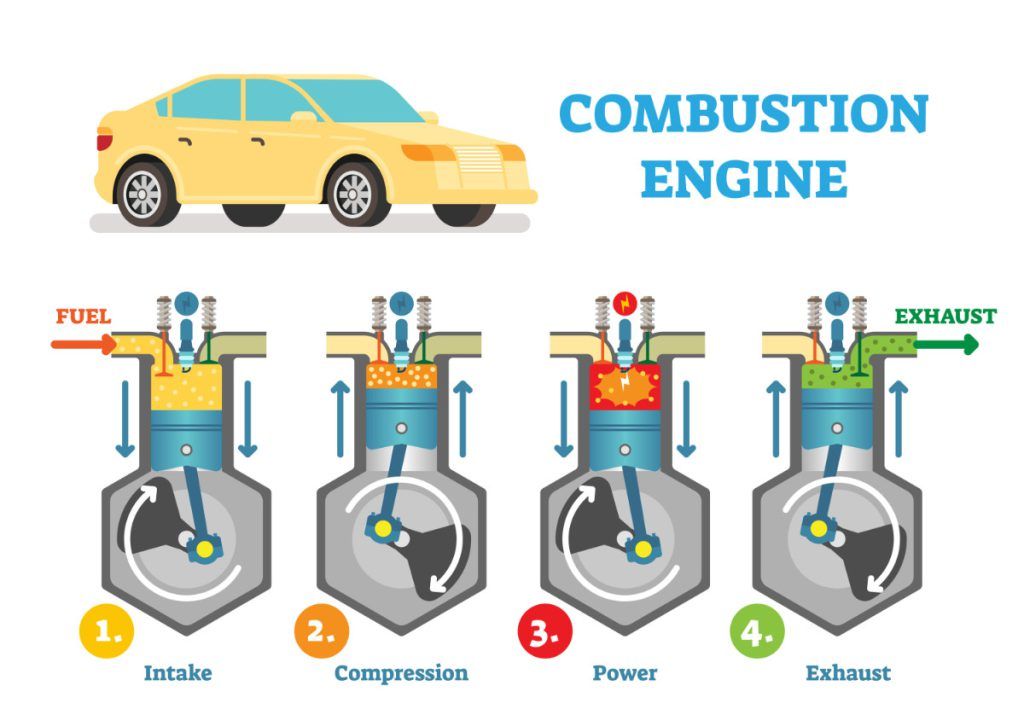The internal combustion engine (ICE) is a marvel of engineering that powers vehicles, machinery, and even our daily lives. This essay will delve into the basic principles of how an internal combustion engine works. By understanding the underlying mechanisms, we can appreciate the intricacies of this revolutionary invention.
An internal combustion engine functions on the principle of converting the chemical energy stored in fuel into mechanical energy through a controlled combustion process. This process undergoes four essential strokes: intake, compression, combustion, and exhaust.
The intake stroke initiates the engine cycle by pulling in the air-fuel mixture into the combustion chamber. The intake valve opens, and as the piston moves down, the mixture is drawn in due to the pressure difference caused by the piston’s descent. The piston reaches the bottom of the cylinder, known as bottom dead center (BDC), completing the intake stroke.
The compression stroke follows the intake stroke in the internal combustion engine. Both the intake and exhaust valves remain closed during this phase. As the piston moves up, it compresses the air-fuel mixture. This compression raises its temperature and pressure, maximizing its potential energy. At the top dead center (TDC), the piston is at its highest point, and the compression stroke concludes.
The combustion stroke is the phase where the real magic happens. When the piston reaches TDC, a spark plug ignites the compressed air-fuel mixture. This ignition causes a controlled combustion, resulting in an explosion. The rapid expansion of gases pushes the piston down, creating rotational force. This force is transmitted to the crankshaft through the connecting rod, which converts linear motion into rotational motion. As the piston descends, it passes the exhaust valve, which opens in preparation for the next stroke.
In the final stroke, known as the exhaust stroke, the piston moves upward, pushing the combustion by-products out of the cylinder. The exhaust valve opens, and as the piston ascends, the pressure within the cylinder decreases, facilitating the expulsion of waste gases. Once the piston reaches BDC, the exhaust valve closes, preparing for the next intake stroke. This four-stroke cycle (intake, compression, combustion, exhaust) forms the foundation for the operation of an internal combustion engine, propelling it forward. However, it is vital to note that these strokes occur simultaneously in multiple cylinders, enhancing the engine’s efficiency and power output.
Another important aspect to consider is the role of the fuel-air mixture’s composition. The ideal air-fuel ratio varies depending on the type of engine and its operating conditions. A stoichiometric mixture, where fuel and air are precisely balanced, ensures optimal combustion efficiency. However, engine designs may differ, such as lean-burn and rich-burn engines, each possessing its own unique characteristics and use cases.
The internal combustion engine, driven by the four-stroke cycle, has significantly transformed the world we live in today. Understanding the basic principles at work within an engine allows an appreciation of the complexity inherent in these machines. From the intake stroke pulling in the air-fuel mixture to the compression stroke maximizing its potential energy, to the combustion stroke generating mechanical force, and finally, the exhaust stroke expelling the waste gases, these processes harmoniously combine to propel us forward.
The continuing advancements in internal combustion engine technology, coupled with a growing focus on environmental concerns, are paving the way for cleaner and more efficient engines in the future. Gaining insight into the basic principles of an internal combustion engine lays the foundation for appreciating its impact on transportation, industrial processes, and the world as a whole.




